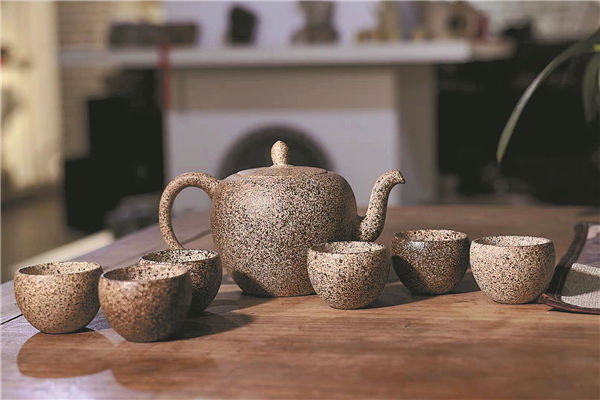

Shanxi province craftsman displays a passion for preserving and innovating a millennia-old earthenware pottery style, Yang Feiyue and Sun Ruisheng report in Taiyuan.
An array of delicate earthenware, ranging from three-legged wine vessels to teapots and incense burners, adorn Zhang Hongliang's office in Pingding county, North China's Shanxi province.
Each piece exudes an artistic allure that captivates the eye and the mind.
They are made using historical Pingding earthenware craftsmanship that was named as a national intangible culture heritage by the State Council in 2014.
Zhang was named a national inheritor of the craft in 2018, and he has managed to transform the traditional earthenware, which was mostly rough, simple and utilitarian, into art.
"We have tried to combine techniques such as porcelain carving, lacquering, paper-cutting, calligraphy and painting to inject more vitality to Pingding earthenware," says Zhang, who has been engaged in local production and promotion of the craft for almost three decades.
"The variety of patterns and colors has also become increasingly diverse," he adds.
Zhang believes that such moves are important to ensure the sustainable development of Pingding earthenware, which carries a history of more than 2,000 years.
In 1972, a large number of earthenware fragments were excavated from a collapsed ancient kiln in the county, and experts confirmed they date back to the Qin Dynasty (221-206 BC).
The local pottery then became a popular handicraft during the Tang Dynasty (618-907), according to the Pingding County Annals published in the 1980s.